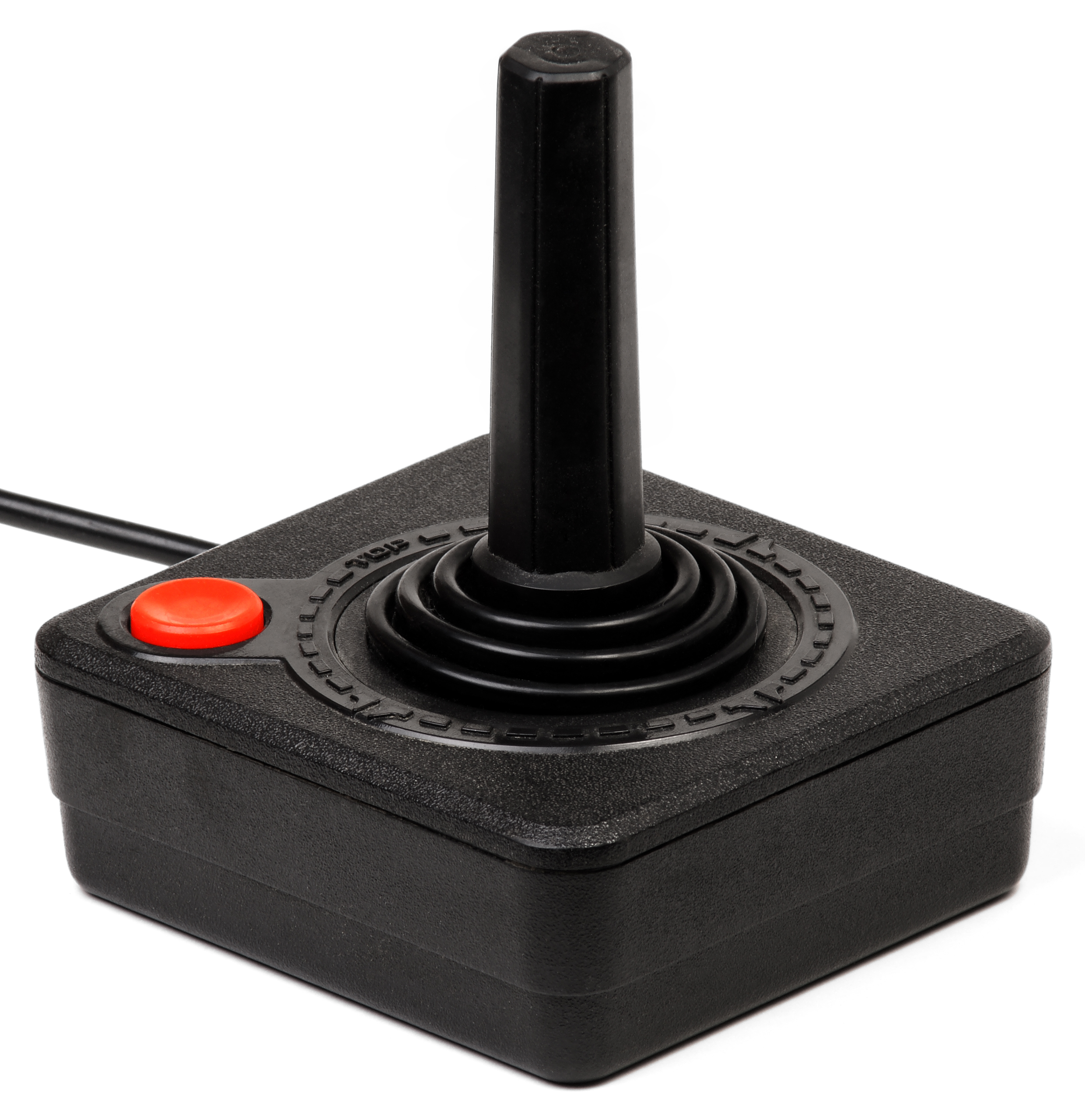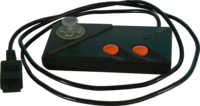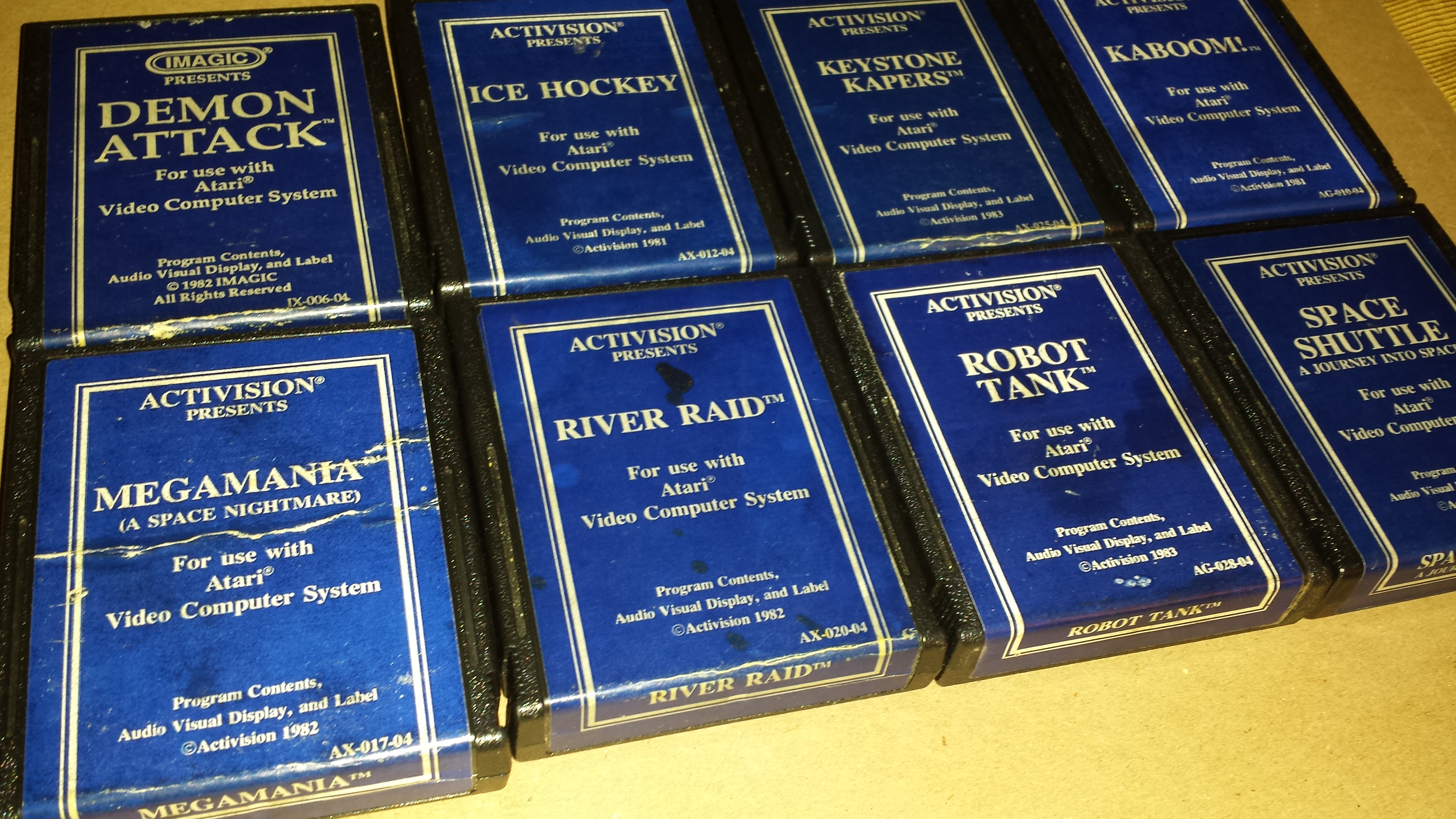Behold the majesty...
That, my friends, is a Xonox Double-Ender cartridge. There are a number of these, some more common than others (but none extremely common, or cheap), all of which have two games inside one cartridge shell. This makes it incredibly irritating for those who like to keep their collections alphabetized.
So why am I bringing this up? Because while one of the games in the above cartridge worked fine with my semi-modern LCD television, the other one did not.
In case you're wondering, the one that worked was Chuck Norris Superkicks...because nothing stops Chuck.
To be specific, when I started up the game, the picture would appear to be scrolling much like an out-of-sync movie reel in an old Bugs Bunny cartoon. I cleaned the cartridge, tried a different system, and nothing seemed to fix the problem.
That is, of course, until I remembered a previous experience I'd had with another television set. When I first got my four-switch woodgrain Atari 2600, one of the games that came with it was Asteroids. When I plugged it into the system and tried to play it on my 47" LED HDTV, the picture wouldn't stay still. It flickered up and down, all out of sync. The other games I had worked fine, but this one just wouldn't cooperate.
So I switched to my small 24" LCD flatscreen in the other room, and voilà, Asteroids worked. The VCS has been sitting in that room ever since, because I can't be without Asteroids.
So how now to play a game that wouldn't even play on my smaller television? Play it on an old CRT television, of course.
For those unfamiliar with the term: a CRT (short for cathode ray tube) display is the type of television they don't make anymore, where an electron gun inside the unit would fire at the screen to make the pictures (Wikipedia explains it better than I do). The short version is that CRT televisions are the old boxy ones.
So I brought my trusty Atari 2600 Jr. upstairs to where I have an old TV/VCR combo sitting in a corner and plugged it in. As expected, the game then worked great (I mean, it's still not really all that good a game, but at least you could see what was happening).
Okay, JT, so how about the "why"?
Why do I collect retro gaming, or why I figured that the CRT would work? Well, for the first case, it all started back when...The second one.
Oh. Well the thing to note about CRT displays is that there are no pixels, because the display is projected, not fixed. What it does have, though, are lines. The electron gun scans across the screen, displaying a line at a time to build up the image. So programs for the Atari 2600, designed with that in mind, could specify the timing of the scanlines in their code, so that they weren't limited to a set number of lines per screen. This is fine on a CRT, but an LCD or LED display has fixed lines, which causes synchronization errors. The frequency is all wrong.Well that's lame for the retro collector, isn't it?
..which actually brings me back to the title of this blog post (If you don't know what Hertz is, I will again defer to Wikipedia for explanation).One of the things that the retro collector has to keep in mind is that old games were designed for old equipment. So it's wise to keep some hanging about. Here are a few tips on dealing with the hardware requirements we must face:
- CRT Television sets: for the reason described above, but also if you plan on using a light gun for games like Duck Hunt. Light Guns for old systems worked in tandem with the timing of the scanlines to determine where the player is aiming. Therefore, they will typically not work with flat-panel televisions.
- RF Adapters: Most video game systems from the '70s and '80s output video via an RF modulator. They used a standard single RCA cable to connect from the console to a switchbox (into which you'd also plug the rabbit-ears antenna), which was then connected to the television via either a set of screw-in prongs or a UHF connector.
The former are pretty much nonexistent on television sets these days, but you can still find the latter, as people still use them for cable service. Given that the switchboxes are cumbersome and not always reliable, you may want to invest a couple bucks into getting an RCA female to Coaxial male adapter from your local RadioShack (or other places, like AtariAge.com). Then, if you plan on using your set for cable TV as well as games, you can get a cable switcher (sometimes called an A/B switcher).
If all you have is a monitor with no coaxial input, or if you don't want to bother with a switchbox for your cable, the other option is to get yourself an old VCR. Use the RCA-to-Coaxial adapter to plug the system into the Cable In of the VCR, then use a composite AV cable to plug it into your TV/monitor. As an added bonus, you'll get a much clearer picture this way. - Proper power supply. Even if the plug fits, the output may not be appropriate. I found this out when trying to run an Atari Pong machine off a 2600 power supply; doesn't work. You can also find universal power adapters, in case you don't have an original, which have a veritable morning star of different plug ends to fit a variety of devices. Make sure to check the voltage and connector, or you may see sparks fly.
- A power strip/surge protector with rotating plugs. There are various styles of these. The reason behind this is simple: power adapters back then had huge boxes on them, so a regular power strip may not fit more than two or three devices.
Peace,
JT





























































